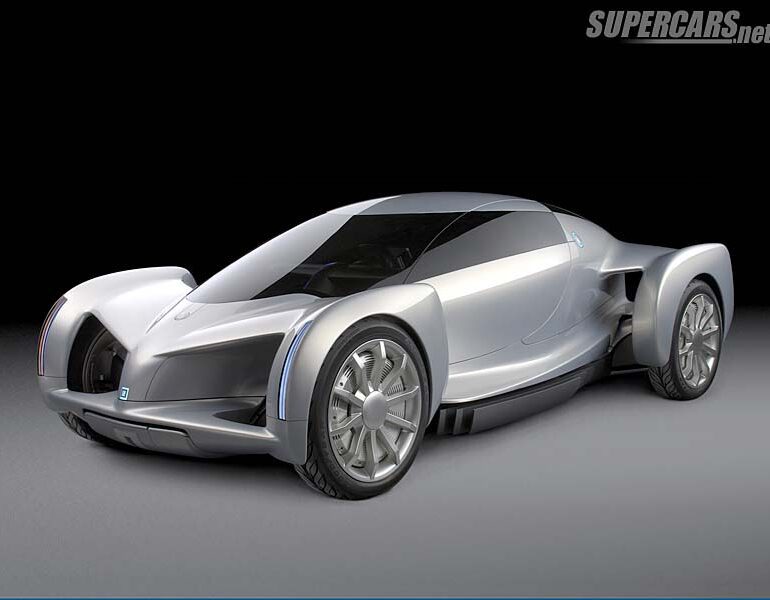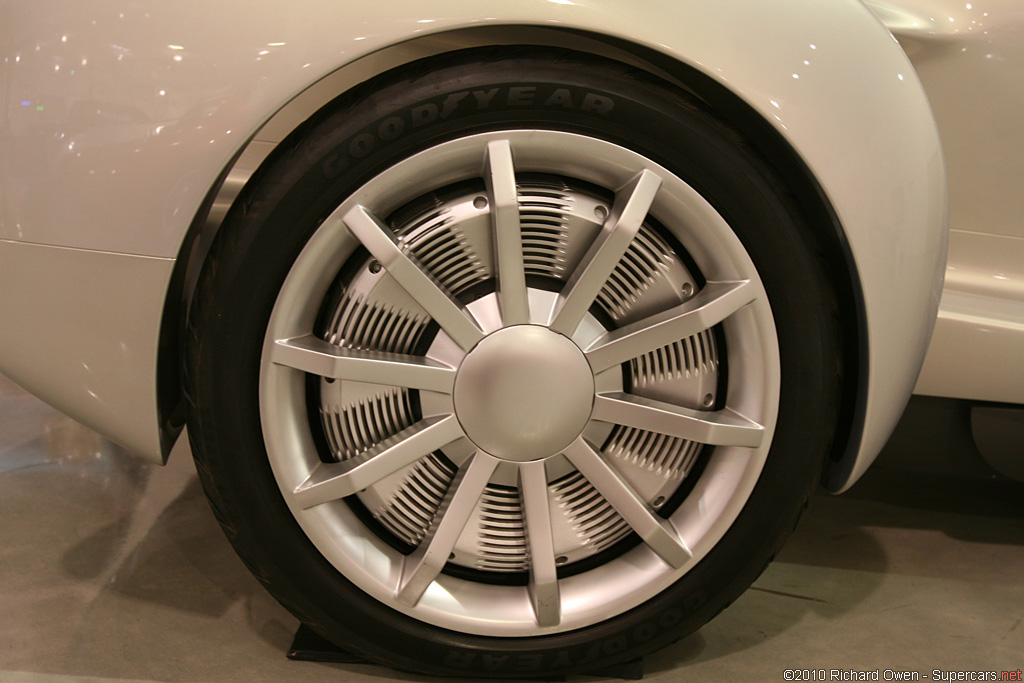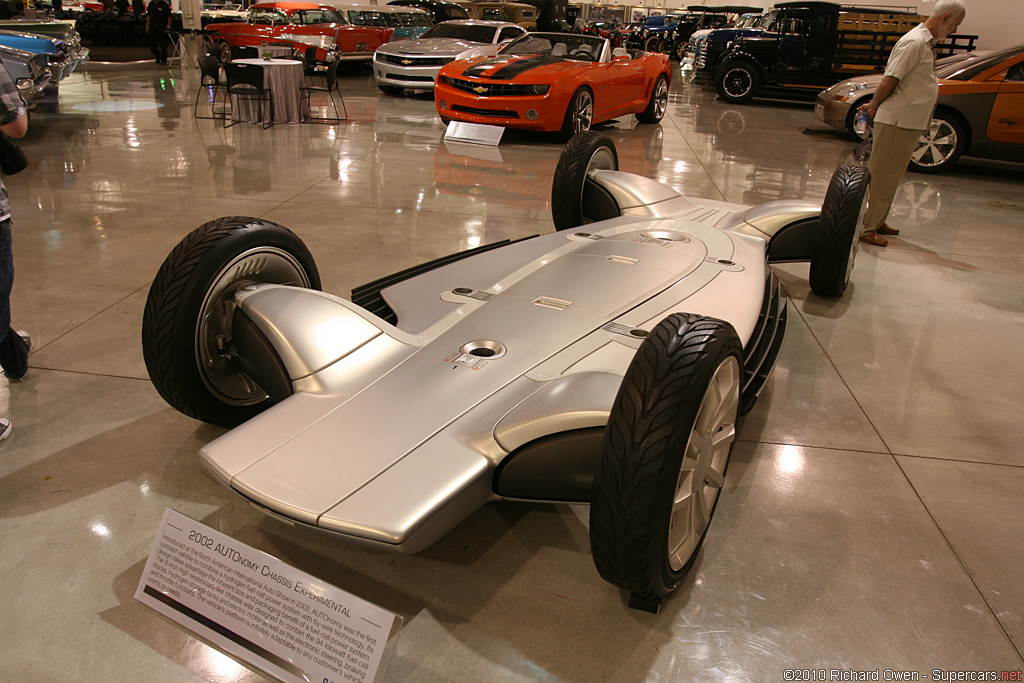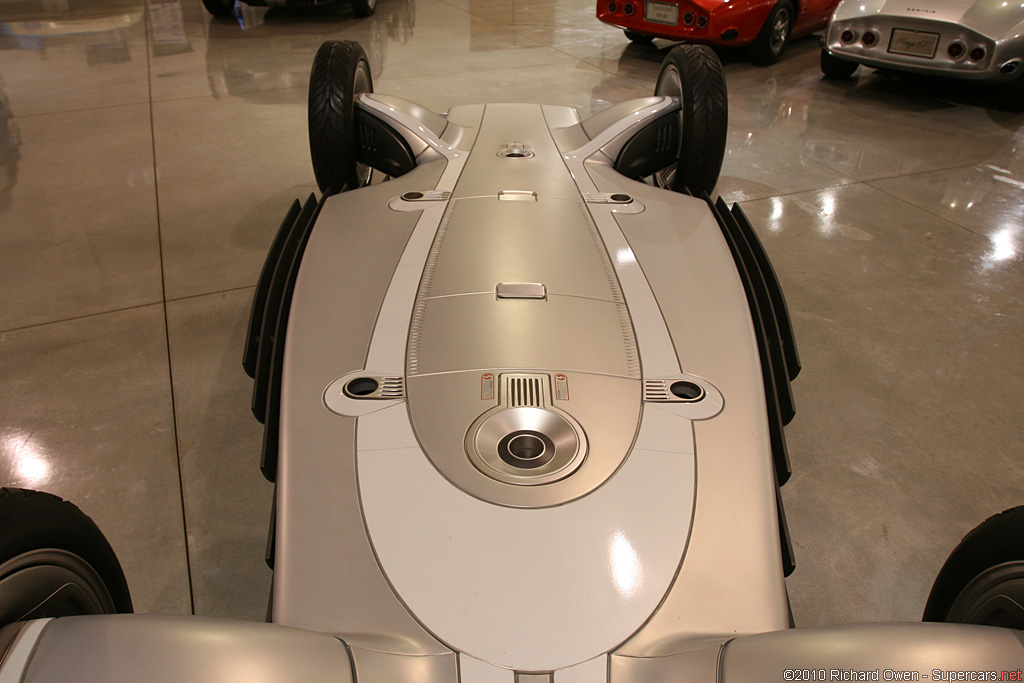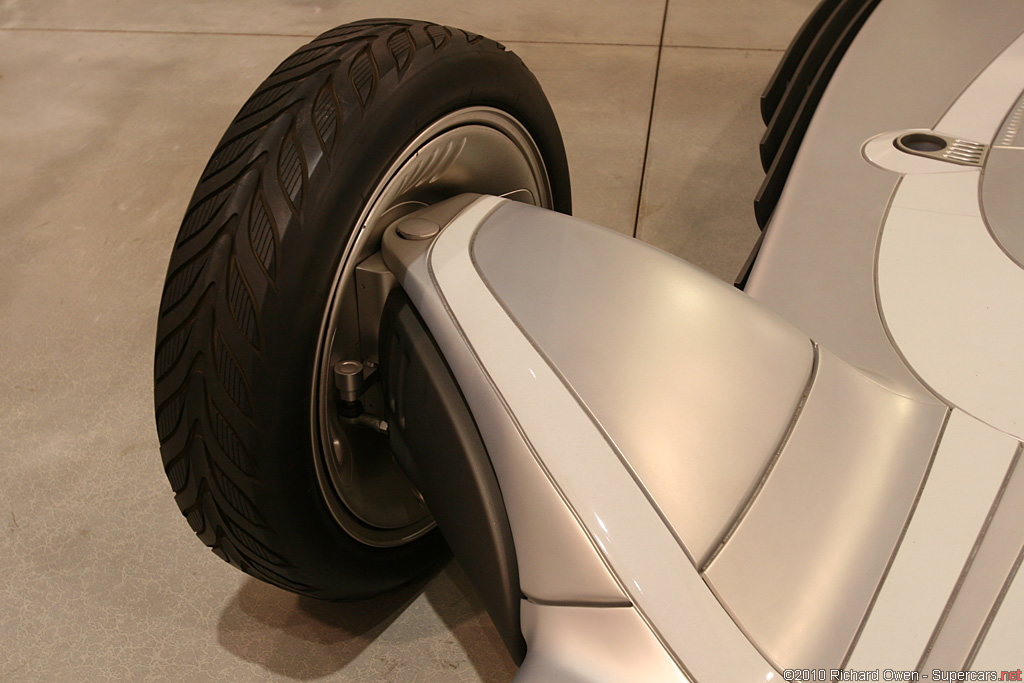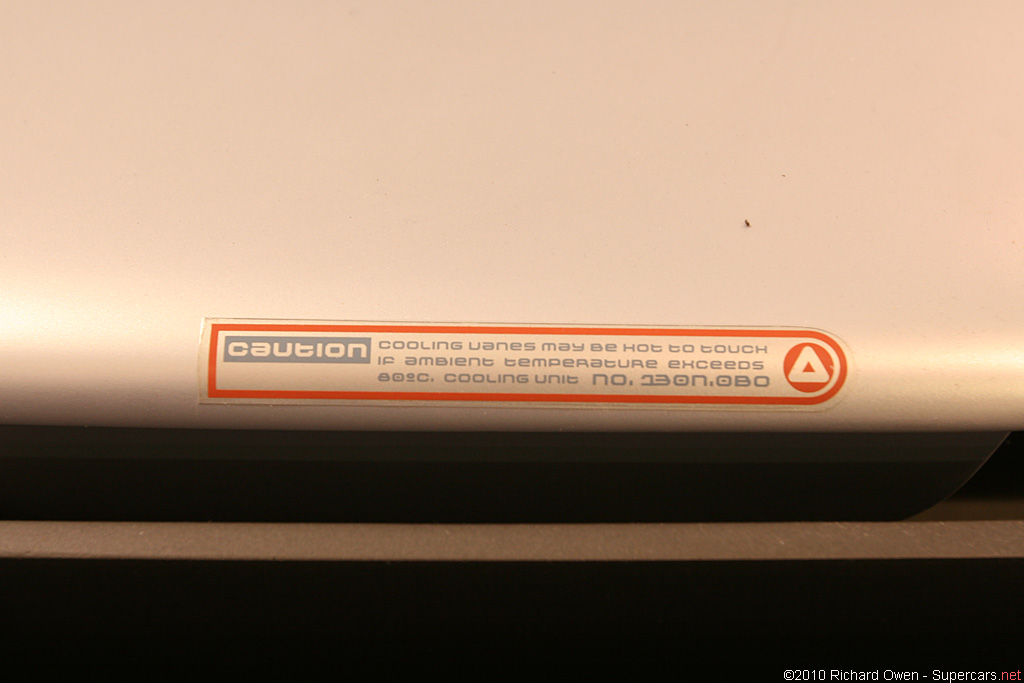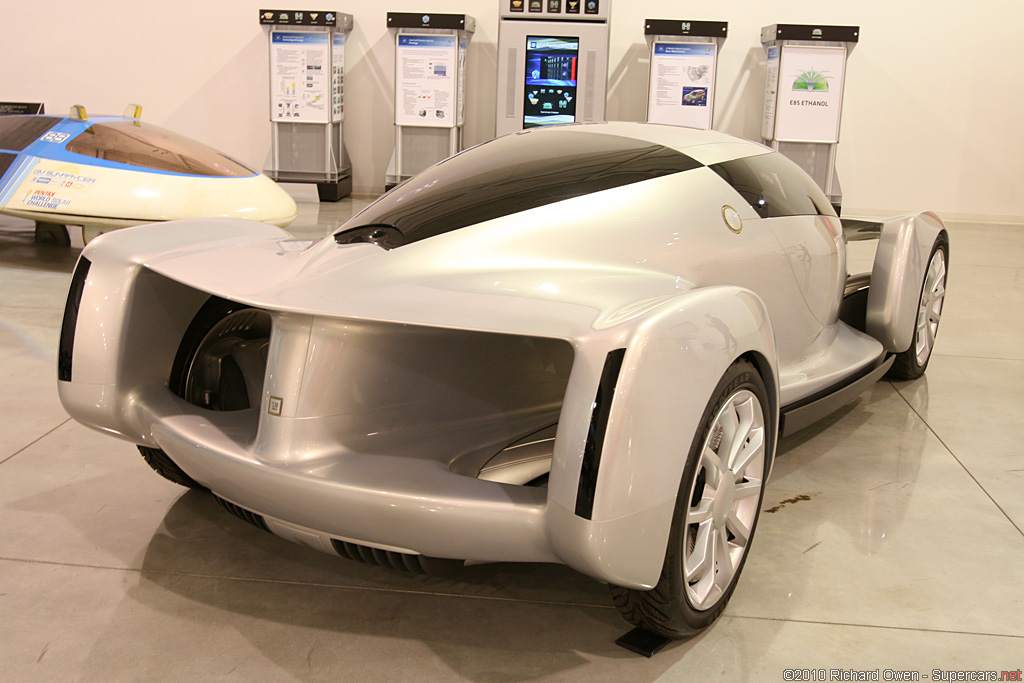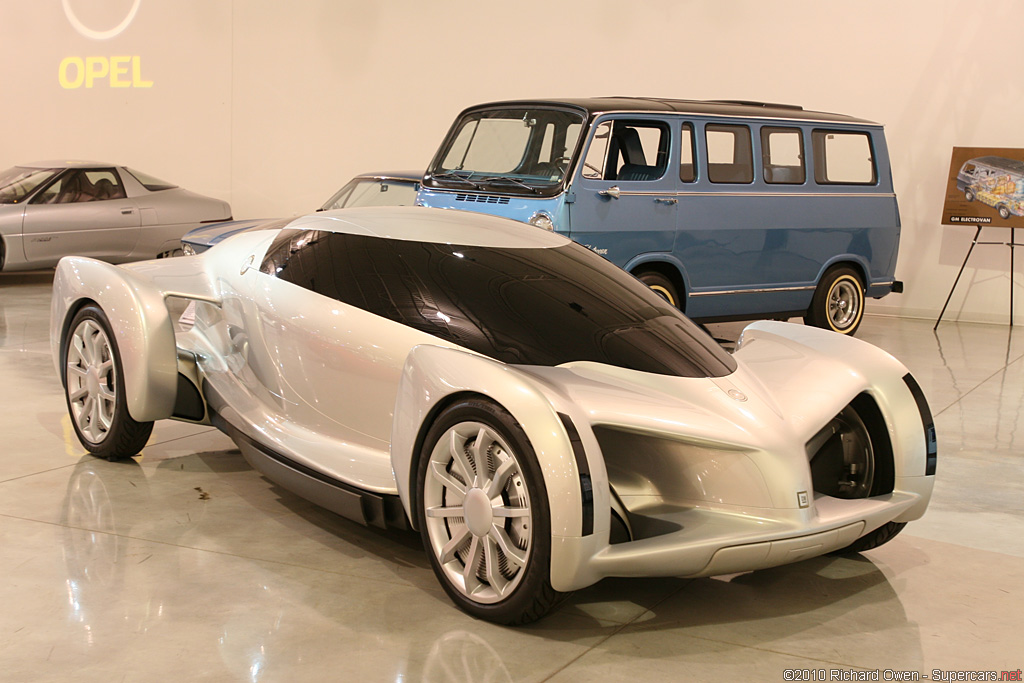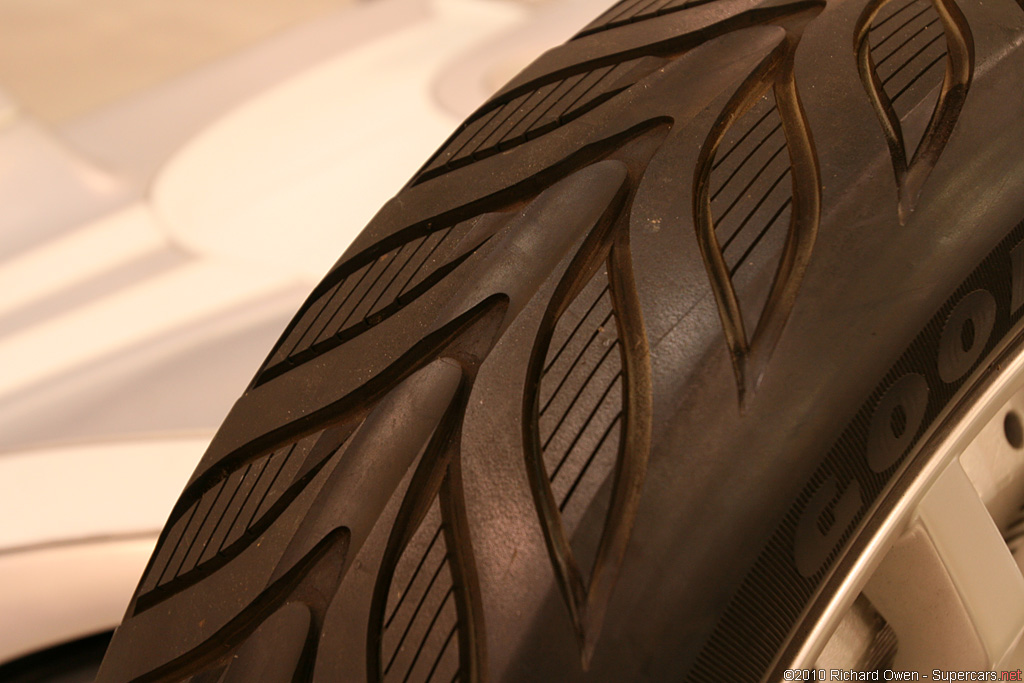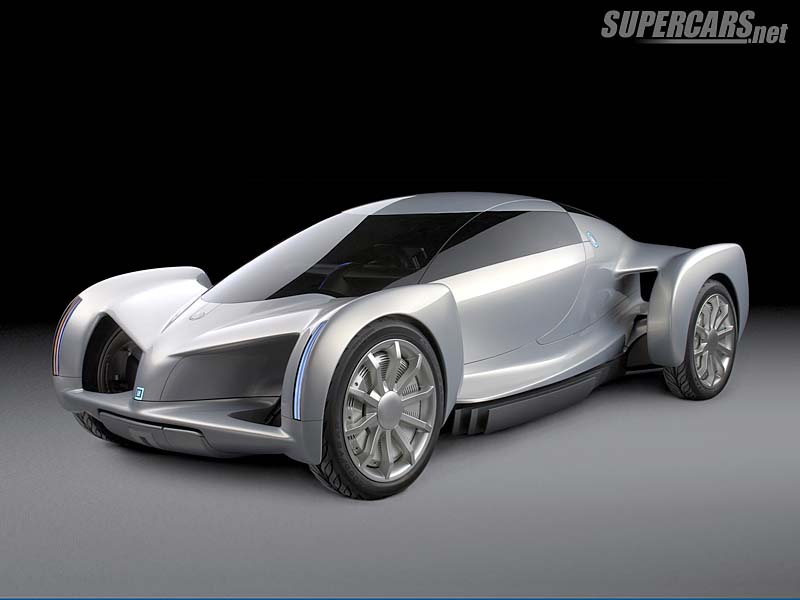2002 GM Autonomy Concept
Autonomy is the first vehicle designed from the ground up around a fuel cell propulsion system and the first to combine fuel cells with drive-by-wire technology, which allows steering, braking and other vehicle systems to be controlled electronically rather than mechanically.
According to Larry Burns, GM Vice President of Research and Development and Planning, the result is an entirely new vehicle architecture that is far greater than the sum of its innovative parts. With autonomy, an almost endless variety of affordable, all-wheel-drive vehicles could be built from a limited number of common chassis, possibly as few as two or three, emitting only water from the tailpipe.
Since a fuel cell propulsion system is about twice as efficient at an internal combustion engine, a fuel cell vehicle could provide twice the fuel efficiency of a comparably sized conventional vehicle, and an optimized fuel cell vehicle like Autonomy would be even more efficient. The Precept concept that GM showed in 2000 projected over 100-mpg gasoline-equivalent for a full-size car. With Autonomy, even better results can be expected as designers explore the opportunities afforded by this unconstrained architecture.
All the working parts of the Autonomy concept vehicle are sandwiched in the skateboard-like chassis, and the application of a new technology eliminates foot pedals, the instrument panel and the steering column. Now, the driver can sit anywhere in the vehicle.
Inside the vehicle, a driver doesn’t have to be seated within a comfortable reach of the pedals, because there aren’t any. A hand-operated steering guide replaces the traditional foot pedals, instrument panel and steering column, modeling, in some ways, how planes, motorcycles and snowmobiles operate. Everything the driver needs is incorporated into an adjustable steering guide called the X-drive.
By themselves, fuel cells aren’t a new story. But every fuel cell vehicle shown so far has attempted to stuff the fuel cell stack, hydrogen storage unit and electric motors into the existing internal combustion architecture, often at the expense of passenger space and payload capacity. But a fuel cell stack can be spread around the vehicle and can take any shape you might imagine, said Christopher Borroni-Bird, head of GM’s Design and Technology Fusion Group and program manager of the AUTOnomy concept. It doesn’t have to be bunched up like the cylinders of an internal combustion engine.
AUTOnomy runs on a fuel cell adapted from GM’s existing HydroGen III fuel cell system. The whole package fits within a 6-inch chassis, a dimension that will ultimately be determined by the state of hydrogen storage technology. A single docking connection, or port, on the chassis provides a quick and convenient way to hook up the body’s power, control, heating and cooling systems.
GM Autonomy Concept Gallery
In Detail
| engine | Fuel Cell |
| bhp/weight | bhp per tonne |
| f brake size | mm / in |
| r brake size | mm / in |
| wheelbase | 3098 mm / 122.0 in |
| front track | 1651 mm / 65.0 in |
| rear track | 1272 mm / 50.1 in |
| length | 4465 mm / 175.8 in |
| width | 1879 mm / 74.0 in |
| height | 1247 mm / 49.1 in |
| gear ratios | :1 |


